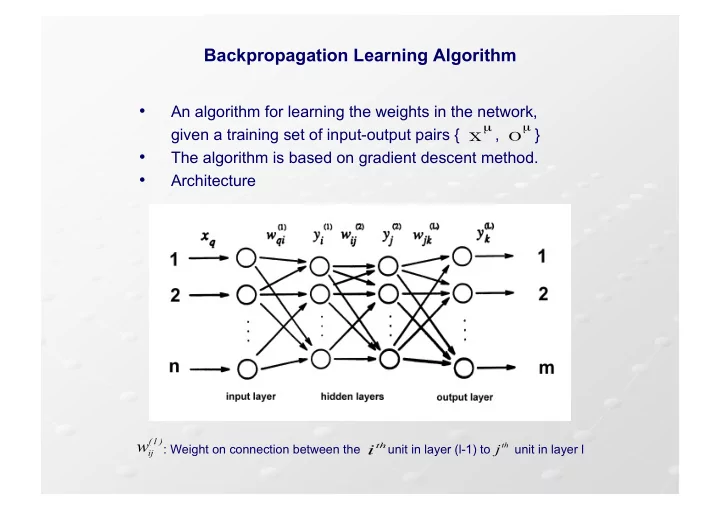

Backpropagation Learning Algorithm • An algorithm for learning the weights in the network, given a training set of input-output pairs { , } • The algorithm is based on gradient descent method. • Architecture : Weight on connection between the unit in layer (l-1) to unit in layer l
Supervised Learning Supervised learning algorithms require the presence of a “teacher” who provides the right answers to the input questions. Technically, this means that we need a training set of the form where : • is the network input vector • is the network output vector
Supervised Learning The learning (or training) phase consists of determining a configuration of weights in such a way that the network output be as close as possible to the desired output, for all examples in the training set. Formally, this amounts to minimizing the following error function : where is the output provided by the network when given as input.
Back-Propagation To minimize the error function E we can use the classic gradient – descent algorithm. To compute the partial derivates , we use the error back propagation algorithm. It consists of two stages: • Forward pass : the input to the network is propagated layer after layer in forward direction • Backward pass : the “ error ” made by the network is propagated backward, and weights are updated properly
Dato il pattern µ , l’unità nascosta j riceve un input netto dato da e produce come output :
Back-Prop : Updating Hidden-to-Output Weights
Back-Prop : Updating Input-to-Hidden Weights ( I )
Back-Prop : Updating Input-to-Hidden Weights ( II ) Hence, we get :
Retropropagazione dell’errore : • le linee nere indicano il segnale propagato in avanti • Le linee blu indicano l’errore (i δ ) propagato all’indietro
Recommend
More recommend